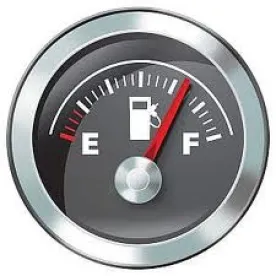Four auto manufacturers struck a deal with California regulators on July 25, 2019, agreeing to support and comply with a voluntary framework for fuel economy and emissions that ensures significant improvements through model year 2026. This agreement could blunt the impact of a new EPA rule that is expected to rescind current standards for increased fuel efficiency in favor of freezing the standard for cars and light trucks at 37 miles per gallon through the 2026 model year. EPA is expected to finalize the Safer Affordable Fuel Efficient (SAFE) Vehicles rule by the end of this year.
While the standards set forth in the voluntary framework are stricter than the proposed Trump administration standards, they are more lenient than those adopted at the federal level during the Obama administration. According to a California Air Resource Control Board (CARB) press release, “the framework will deliver the same greenhouse gas reductions in five years as the original Obama standards would have achieved in four.” CARB Chair Mary Nichols brokered the agreement, which includes Ford, Honda, BMW of North America and Volkswagen Group of America. Together, these four manufacturers represent approximately one-third of the automobiles sold in the United States. According to a New York Times report from mid-August 2019, Mercedes-Benz was also considering joining the agreement.
The voluntary framework, which is available here, consists of the following terms:
- Revised Greenhouse Gas Standards: GHG standards, beginning in the 2022 model year (MY) and extending through the 2026 MY, with increasing stringency at a nationwide average annual rate of 3.7% (year-over-year); of the 3.7% annual stringency, 1% can be achieved using the advanced technology multiplier credits, below.
- Appropriate Flexibilities to Promote Zero Emission Technology: Continue current advanced technology multipliers that now expire after MY 2021, extending them through MY 2024 at the current 2.0x for Battery Electric and Fuel Cell Electric Vehicles (BEV/FCEV), and 1.6x for Plug-in Hybrid Electric Vehicles (PHEV), tapering off at the current MY 2020 and MY 2021 levels in MY 2025 and MY 2026, respectively.
- Simplify Accounting: Remove the requirement to account for upstream emissions of fuels, as these can be addressed by other programs.
- Increase Innovation: Raise the current cap on off-cycle menu credits, which account for actions taken outside the formal test cycle framework, from 10 grams per mile to 15 grams per mile starting in MY 2020.
- Streamlining and Process Improvements: Improve the off-cycle credit program to facilitate timely review and decision-making regarding the approval of new off-cycle technologies.
- Recognize California’s Authority: Participating companies are choosing to pursue a voluntary agreement in which California accepts these terms as compliance with its program, given its authority, rather than challenge California’s GHG and ZEV programs.
One of the automakers’ major concerns about the ongoing EPA rulemaking has been that it would motivate the adoption of more stringent state-level standards that would create regulatory uncertainty and potentially subject automakers to a burdensome patchwork of uncoordinated state-by-state standards. Seventeen automakers stated this concern in a formal letter to President Trump on June 6, 2019. In a joint statement released after the announcement of the agreement with CARB, the four participating automakers stated: “These terms will provide our companies much-needed regulatory certainty by allowing us to meet both federal and state requirements with a single national fleet, avoiding a patchwork of regulations while continuing to ensure meaningful greenhouse gas emissions reduction.”
In July, the Trump administration responded to the announcement of the agreement by affirming its intent to continue the ongoing EPA rulemaking. According to a White House spokesperson, the current administration “believes strongly in a national fuel standard that promotes safer, cleaner and more affordable vehicles. The federal government, not a single state, should set this standard.” Past reports suggest that the administration may seek to rescind a 2009 federal preemption waiver authorizing California to establish emissions that may exceed federal standards.





 />i
/>i
